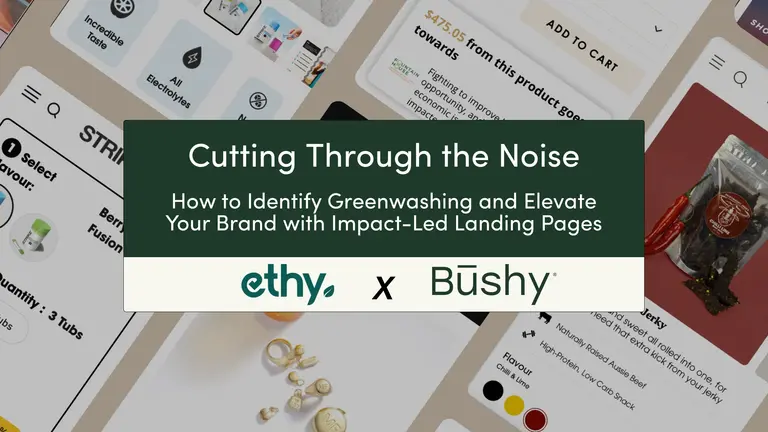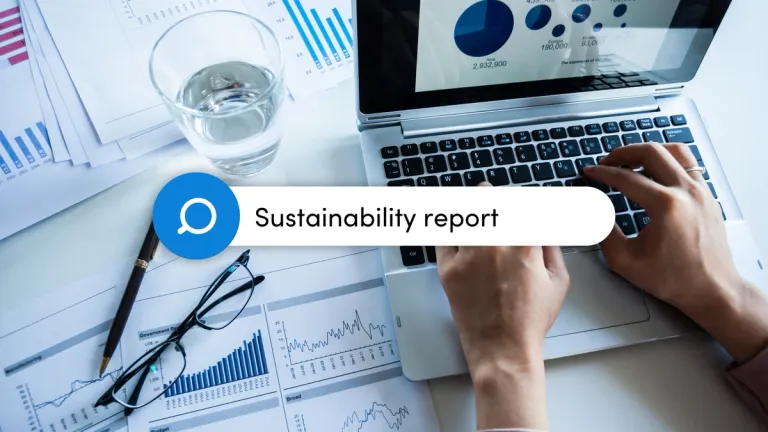
ethy and B Corp - what are the differences?
ethy and B Corp share a common vision of a business landscape that operates sustainably and impacts positively on people, communities and the planet. Yet despite these common goals, there are some key differences in approach and result.

Responsible Procurement Checklist
A helping hand for your business to ensure its procurement aligns with its sustainability goals.
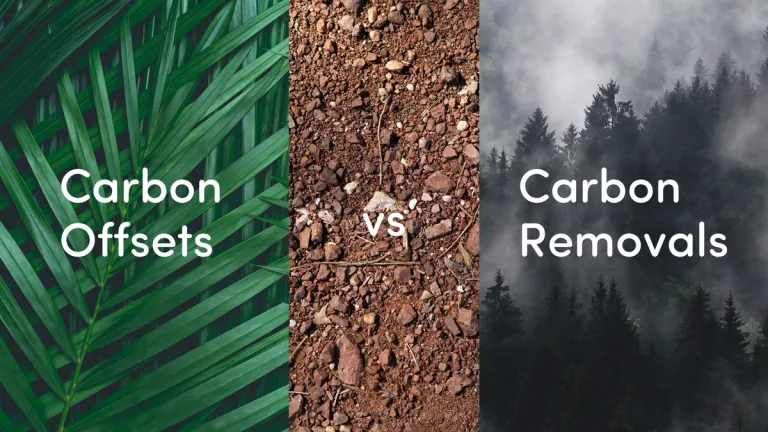
Sustainability Strategy
Carbon Offsets vs Carbon Removals
Simplifying carbon offsets vs. removals: finding the right fit for your business and the climate.

Sustainability Communications & Marketing
The Art of Effective Sustainability Communications for Businesses
This article explores how transparent and compelling messaging can boost trust and loyalty. We'll cover key principles, engaging diverse audiences, and real-world examples.
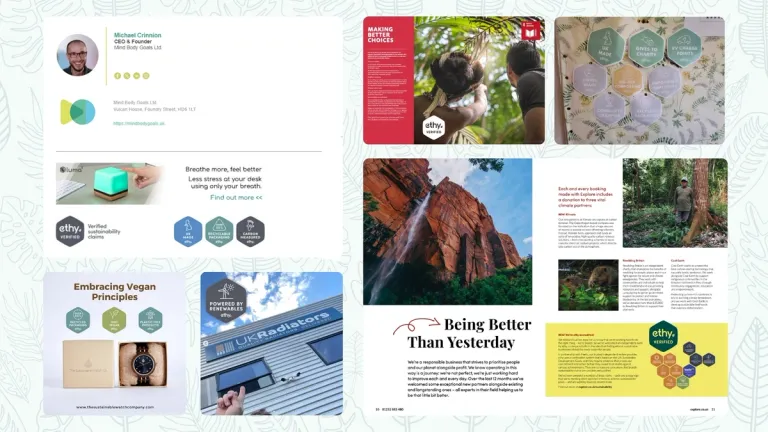
Sustainability Communications & Marketing
Ecolabel Integration Guide
Your website is a great starting point for showcasing your awarded ecolabels, but there's many other areas to consider using them. Explore examples and guidance on using your ecolabels across various marketing channels in the article below.

Downloadable Guides
Sustainability Marketing: Your Guide to Navigating the Green Claims Code
Your guide to navigating the complexity of the UK's consumer protection law on environmental claims: The Green Claims Code
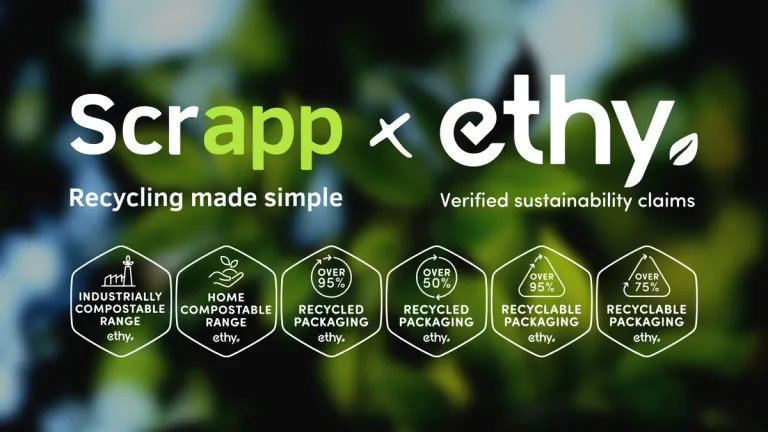
Downloadable Guides
Product Packaging Guide: Identifying Recyclability of Materials in the UK by Scrapp
How can brands identify and choose packaging that works best for them and is also as sustainable as possible?
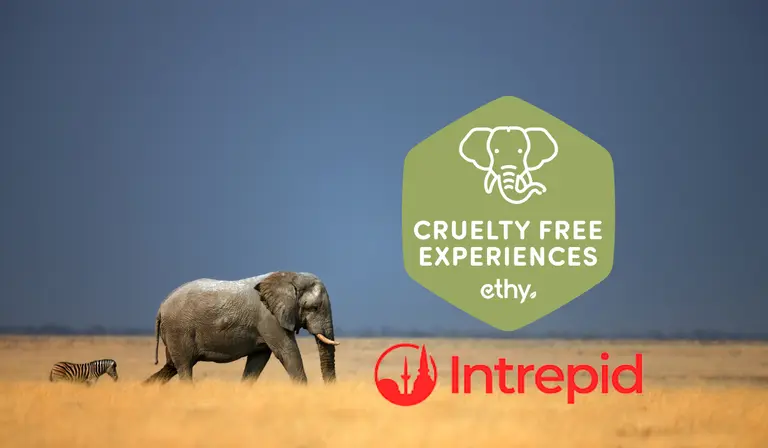
Sustainability Policies
Animal Welfare Policy Toolkit for Travel Industry by Intrepid
Use the Animal Welfare Policy toolkit that Intrepid developed and provided for free to implement best practices.
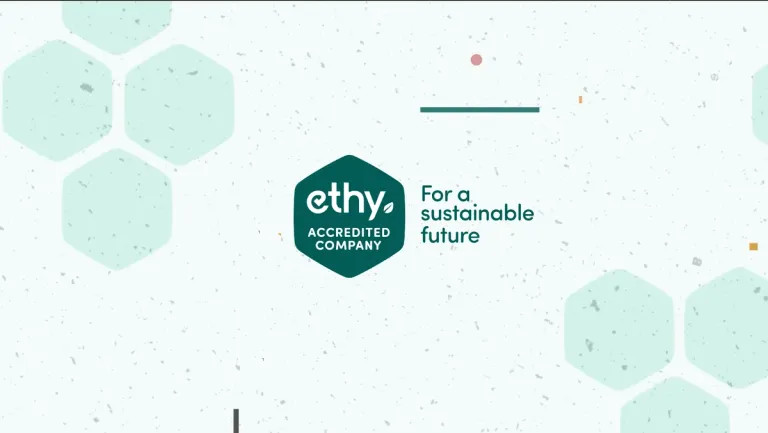
ethy Verification
How to use your ethy verified mark
ethy verified brands can demonstrate their commitment for a more sustainable future using ethy accreditation mark. Only companies that have successfully passed ethy's accreditation assessment are permitted to use the accreditation mark.
It is important that the accreditation mark is used in accordance with ethy Trademark Usage Guidelines.
Please download ethy Brand and Trademark Usage Guidelines from here.
These guidelines explain how you can and must use and visually present our brand assets at all times. Your use of our brand assets indicates your acceptance of these guidelines, and you understand that your use of our brand assets in violation of these guidelines will result in the automatic termination of your license and/or affiliate partner status and/or permission to use our brand assets.
Use of our brand assets must be expressly authorised in writing.
Your use must not mislead consumers as to our sponsorship of, affiliation with or endorsement of your company or your products or services.
Our brand assets are our exclusive property. All goodwill that results from your use of our brand assets will be solely for our benefit. You will not take any action that is at odds with our rights or ownership of our brand assets. Where used on a web page, our brand assets, as well as the mention of our name, should include embedded hyperlinks to our homepage: www.ethy.co.uk or to your brand profile page on ethy website.
Our brand assets must be used in a respectful manner. Our brand assets may not be used in a way that harms us, our products or services, or in a manner which, in our opinion, lessens or otherwise damages our reputation or the goodwill in our brand assets. In other words, please do not associate our brand assets with any illicit or illegal activities or use them in a way that is deceptive or harmful.
If you’re feeling unsure about the proper use of our logo or other assets, it’s always good to ask! Send us an email at marketing@ethy.co.uk
Using ethy Brand Assets
If you are a customer please sign in to your dashboard to access your brand-specific accreditation marks and certification.
By using our brand assets, you indicate your acceptance of our Brand and Trademark Usage Guidelines, and understand that violating these guidelines will result in the termination of your permission to use our brand assets.
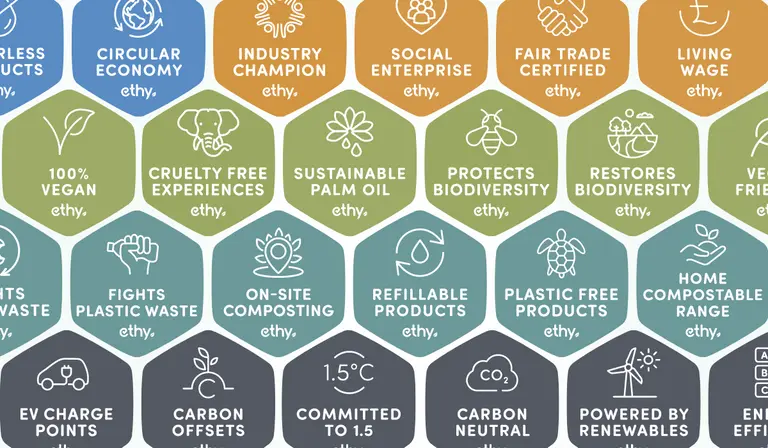
ethy Verification
ethy’s Sustainability Standards for Brands Framework Revision 01/11/2022-01/03/2023
Summary of the revisions, new standards and guidance for ethy verified brands.
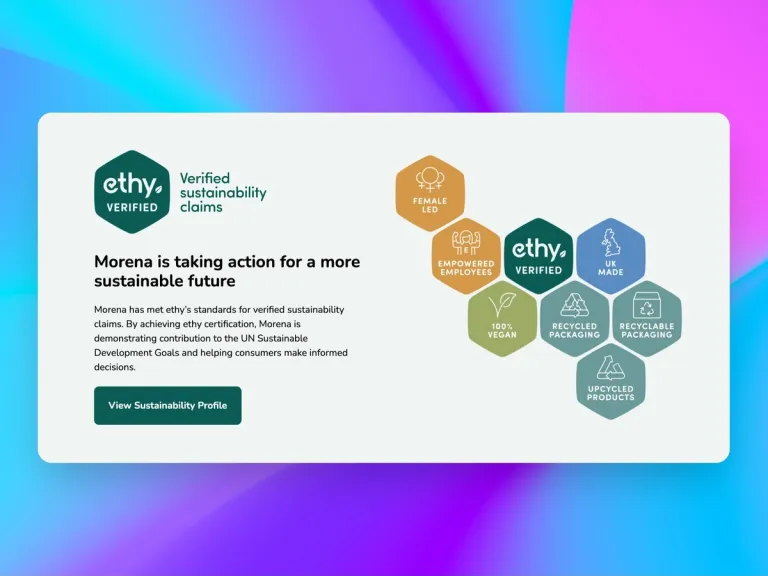
Sustainability Communications & Marketing
Introducing ethy's Embeddable Widgets
The easiest way to showcase your sustainability story on your website

Resources & Circular Business Models
Alternative names for palm oil
There are over 200 different names for palm oil. This list includes A-Z names that palm oil is also known as.
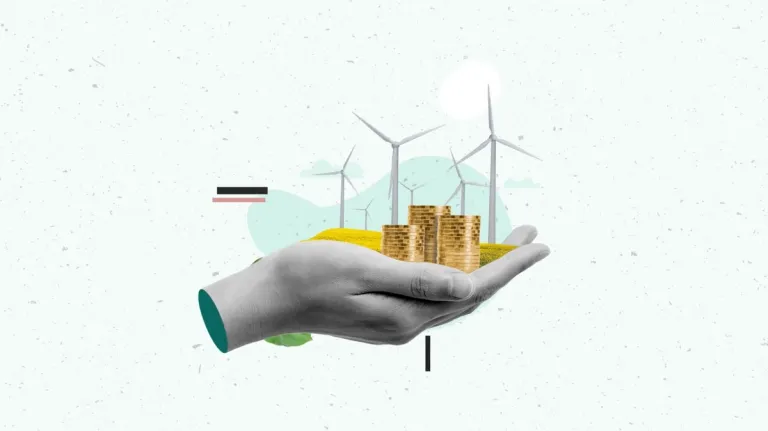
ethy Verification
How does ethy verification benefit your brand?
More than one-third of shoppers now actively choose brands that can demonstrate good sustainability practices and values, while one in three have stopped buying from certain companies because of environmental concerns (1).
For brands, this means that understanding and maximising social and environmental responsibilities make good business sense.
However, consumers need – and want – help in making sustainable choices. Some 88% of shoppers in the UK and USA say they’d like brands to help them be more environmentally friendly (2), while more than a third say that a lack of information is stopping them from choosing the most sustainable brands(3).
Becoming ethy verified helps businesses give consumers the information they want at the moments that matter most, so they can make informed purchasing decisions. Give consumers the reasons they’re looking for to choose your brand.
Using sustainability standards benefits businesses in a whole range of areas, from improved reputation and profitability to reduced costs and increased production(4).
ethy’s corporate sustainability certification benefits:
Amplify and safeguard brand reputation
Proof-back your claims to ensure brand credibility. Consumers are more aware of greenwashing than ever before. Third-party verification shows that you have hard evidence of your sustainability efforts and are transparent about your business practices. This is key to avoiding accidental greenwashing and minimising the risks associated with making green claims. This authenticity is key to building trust and brand reputation.
With ethy’s expert-backed verification framework developed in partnership with some of the most important authorities in the field of sustainability, ESG and CSR, you can be confident that your business is pioneering best practice.
Supercharge sales with powerful communication
66% of global shoppers are willing to pay more for sustainable goods, according to the Nielsen Global Corporate Sustainability Report. However, it’s not always easy for consumers to identify the brands that are having a positive impact. Sustainability-smart consumers want accessible, no-fuss indicators of quality and distinction when they make shopping choices.
ethy verified companies gain access to powerful visual communications tools that instantly convey a company’s verified positive impact on people, environment and animals, capturing the attention of potential shoppers. Using a third-party verification helps your company credibly stand out for all the good reasons.
Showcase positive impact across products, shop windows, sales materials, marketing campaigns and corporate communications to give consumers the reasons to choose your brand.
Increase reach and brand awareness
Sustainability champions are a growing audience, yet with sustainability proving a confusing area for most consumers, we developed a top-rated digital solution that helps consumers shop by their values.
ethy verified members gain access to our multi channel platform of 10,000+ conscious shoppers across the UK. Through our in-house editorial team, we deliver your company an SEO optimised brand profile on our mobile apps and website and put your company in front of thousands of responsible shoppers. On an ongoing basis ethy members enjoy opportunities to increase reach and brand awareness through features in various marketing campaigns, on-site promotions, collaborations and participating in ethy’s Ambassador Programme, including Review Club.
Accelerate your sustainability strategy
Build employee knowledge and incorporate sustainable practices while engaging stakeholders in your sustainability strategy.
Sustainability is a journey, not a destination. It’s a path towards realigning your company to be more functional with nature. This means continuous improvement towards more sustainable practices.
We support accredited companies along their journey through corporate sustainability workshops for you and your employees. Our routine workshops provide a cost-effective way to access expert training on sustainable company performance and engage employees in your sustainability strategy.
Engaging in sustainability principles such as reduce, reuse, recycle, compost, circular economy and redesign can benefit companies financially too. Through ethy’s verified assessment and workshops companies can identify opportunities to reduce costs and improve profitability through improving operational efficiency.
Shifting towards a more sustainable future means engaging all stakeholders in your efforts, from employees to investors. Verification boosts your reputation, attracts the best possible talent and serves as a helpful barometer to potential investors who are increasingly putting sustainability and ESG at the top of their wish-lists.
Showcase contribution towards the United Nations Sustainable Development Goals (SDGs)
According to the World Economic Forum, just 0.2% of companies globally were classed as acting “strongly” in line with the SDGs as of March 2021.
The Global Goals are a collection of 17 interlinked goals designed to be a “blueprint to achieve a better and more sustainable future for all”. We believe that consumers and businesses have a leading role to play in this and our aim is to empower both to act for a more sustainable future. We have done this by developing a sustainability verification standard that is in alignment with the SDGs.
That’s why our sustainability verification standard is developed in alignment with the SDGs.
Going through ethy’s verification process demonstrates that you’re playing an active role in achieving the UN Sustainable Development Goals, and that sustainability isn’t just a CSR exercise for your business.
Attract talent and engage your employees
Three-quarters of millennials would take a pay cut to work at an environmentally considerate company(5) whilst two-thirds of UK workers have actively sought help and support with their mental and physical health and wellbeing in 2021(6).
ethy verification helps companies communicate their sustainability agenda to attract and engage the top talent. We use positive, optimistic language in our materials, designed to get all stakeholders excited and inspired about sustainability and your company’s role within it.
Happy and healthy people make a productive and sustainable workforce. ethy’s standards guide companies to ensure employee wellbeing is considered and incorporated at the heart of company culture.
Convenient digital dashboard and dedicated support
Bringing accreditation services to the 21st century, ethy’s digital solution offers a comprehensive dashboard to manage everything in one place. Companies can submit their assessment questionnaire and upload supporting evidence; review and approve their company listing; see the ethy app and website analytics for their listing; and access their personalised communications toolkit & assets as well as business resources and FAQs.
Our team of experts are here to help you through the journey. You’ll always be able to talk to a real person through dashboard live chat, email or video calls.
How long does it take to get ethy accredited?
Typically it takes only a few weeks from submitting your assessment questionnaire results to a business having received verification and having a published profile on the ethy platform. However, the real timeline depends also on factors such as complexity of business, time it takes to receive any further supporting evidence required, approval of profile content, etc.
How can my company get ethy accreditation?
The questionnaire is straightforward, but we do ask for supporting information and data. It’s important that your claims can be backed up with hard evidence – this is central to the integrity of ethy verification and key to reassuring consumers that your company is taking sustainability seriously. If you want to learn more about the criteria and documentation required for each trust mark before applying see here. Got unanswered questions? See our FAQs or email us at support@ethy.co.uk.
If you would like to talk to us or see a demo, please book here. You can add as many guests from your company as you need.
Ready to start your accreditation journey? Apply here.
Sources:
(1) Deloitte: https://www2.deloitte.com/uk/en/pages/consumer-business/articles/sustainable-consumer.html
(2) Forbes: https://www.forbes.com/sites/solitairetownsend/2018/11/21/consumers-want-you-to-help-them-make-a-difference/
(3) Deloitte: https://www2.deloitte.com/uk/en/pages/consumer-business/articles/sustainable-consumer.html
(4) Iseal Alliance: https://www.isealalliance.org/sites/default/files/resource/2019-05/Summary%20-%20Business%20Benefits%20of%20Standards%20Report.pdf
(5) according to the 2016 Cone Communications Millennial Employee Engagement Study.
(6) Fenews: https://www.fenews.co.uk/work-leadership/latest-news-data-confirms-workers-health-and-wellbeing-were-2021s-biggest-challenge-two-thirds-of-uk-workers-sought-health-related-support-last-year/
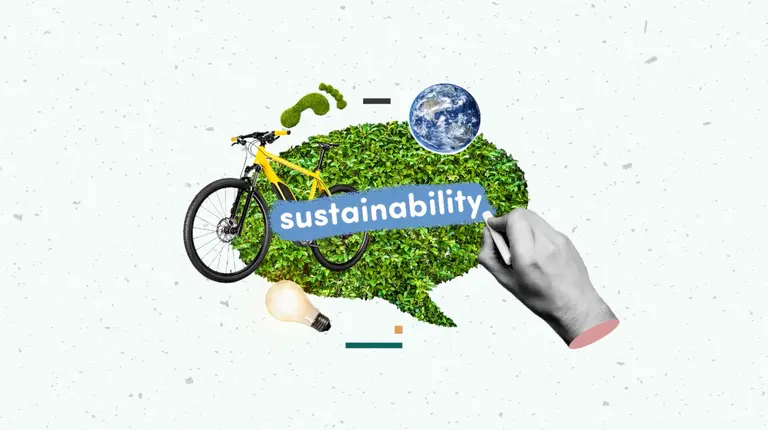
Sustainability Communications & Marketing
How to communicate sustainability
So your company has been making great strides to improve its environmental and social performance. But how do you go about letting the world know about it?
Communicating your company’s positive impact can be fraught with obstacles. Not to mention that only 20% of shoppers trust brand sustainability claims according to a report by Compare Ethics.
Greenwashing has certainly taken its toll on consumer trust, but how can companies with genuine intentions mitigate allegations of greenwashing and communicate their green credentials effectively?
After all, well-crafted communications can unlock huge benefits and transform sustainability into a competitive advantage.
It starts with transparency
Greenwashing simply can't thrive in an atmosphere that embraces transparency. When the marketing of sustainable products or services is open and explicit, it prevents exaggeration and provides evidence.
Companies hoping to garner trust should also own up to their pitfalls (not just triumphs), which can go a long way in gaining the respect of today’s shoppers.
So how do you go about being transparent? Third party accreditation is a good place to start. According to Compare Ethics, 83% of shoppers would be more likely to trust a product’s sustainability claim if it had been verified by a third party.
Our own ethy accreditation process provides expert assurance that a company has met a set of robust criteria through evidence-led assessment.
Keep it simple
Sustainability is a huge and complex topic, which can overwhelm people unless you keep things simple. While it may be tempting to include every possible piece of information around your sustainability endeavours, the everything-no-filter approach rarely leads to effective reporting. Focus on the metrics that are most important to your company and target audience.
A picture paints a thousand words, and so we developed a way to communicate company-wide sustainability in just that - one picture. We call it the Impact Hive:
Made up of proof-earned trust marks, the Impact Hive provides an overview of your company’s sustainability story in a consumer-friendly format.
Make it positive
The climate crisis is depressing enough without constant reminders of the doom and gloom scenario. Positive messages can make sustainability-related behaviours feel more accessible and less scary. Through uplifting messaging and imagery, companies can inspire collective action and install a sense of empowerment.
At ethy, this is something we’ve carried through within our own brand DNA and embrace within our own communications around sustainability. Even something as trivial as our choice of colours play a role here!
Understand your audience
Audiences for sustainability communications are becoming increasingly diverse, as the wider public is taking a greater interest into sustainability. These varied stakeholders want different things from sustainability communications. While some might be focused on societal impact, others may be more concerned with the environment and preservation of nature.
You’ll need to identify what each of your stakeholders want and how best to tailor your sustainability communications to meet their specific needs.
Don’t be afraid to get help
To reiterate, effective sustainability communications is a no easy feat. Consumer trust is at an all time low while brand loyalty has never been more important.
This is where we come in! It’s time to proof-back your environmental and social efforts through ethy and use our pioneering communication solutions to spread the word in a credible way.
Click here to speak to us today.
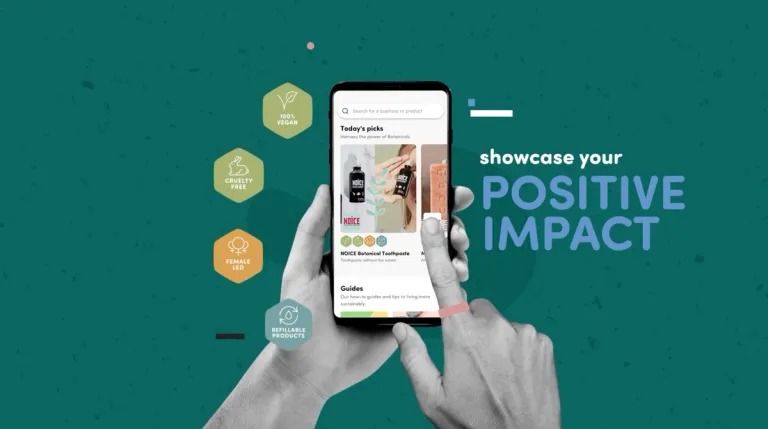
ethy Verification
How to use your ethy trust marks
Derived from the United Nations Sustainable Development Goals and developed with experts, ethy's trust marks help consumers understand your company's sustainability achievements. Awarded through proof-backed assessment, trust marks ensure claims are accurate and explicit.
Only companies that have successfully passed ethy's accreditation assessment are permitted to use trust marks. Trust marks should be used to demonstrate specific environmental or social impacts relevant to the company.
Trust marks should not be combined with any other assets and should be applied to be as visible as possible. In no circumstances are trust marks permitted to be hand drawn, re-created by any other organisation or person or incorporated into another organisation’s artwork.
It is important that trust marks are used in accordance with ethy's Brand and Trademark Usage Guidelines.
Please download the full ethy Brand and Trademark Usage Guidelines from here.
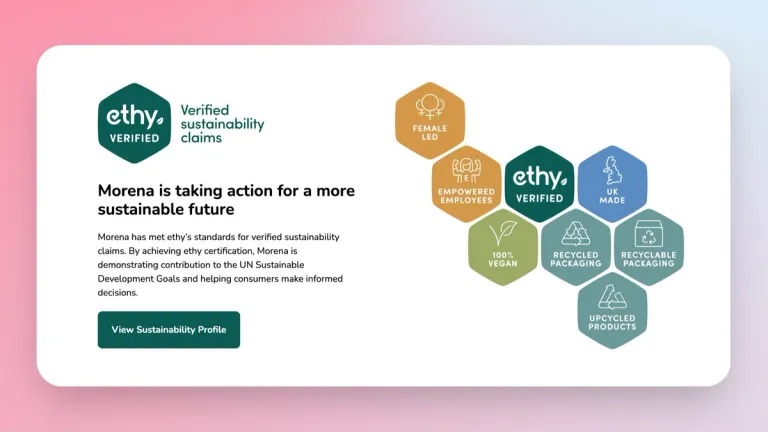
ethy Verification
How to use your ethy Impact Hive
ethy verified brands are provided with a brand-specific Impact Hive (sustainability profile) to illustrate brand-wide sustainability achievements. Impact Hive is comprised of individual ecolabels, used collectively, like a beehive.
Derived from the United Nations Sustainable Development Goals and developed with experts, ethy's ecolabels help consumers understand your brand's sustainability achievements. Awarded through proof-backed assessment, ecolabels ensure claims are accurate and explicit.
The Impact Hive represents brand-level sustainability achievements and is not meant to be used to represent a particular product or service. The Impact Hive should not be combined with any other assets and should be applied to be as visible as possible.
The simplest and fastest way to use your Impact Hive is by embedding ethy widgets into your website. ethy verified customers can find instructions and design options in their ethy dashboard under the Communications Toolkit tab.
In no circumstances should the Impact Hive be hand drawn, re-created by any other organisation or person or incorporated into another organisation’s artwork. Usage of the Impact Hive should comply with our guidelines.
For full Impact Hive usage guidelines, please click here.
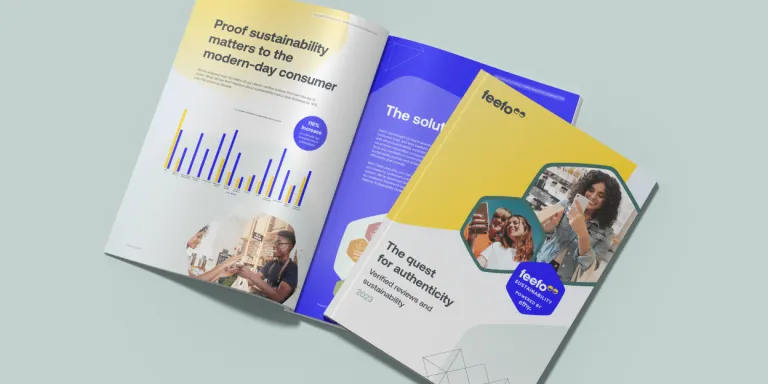
ethy Verification
The Quest For Authenticity
Verified Reviews and Sustainability Report

Sustainability Strategy
How to incorporate climate justice into brand operations
Explore climate justice, the role it plays in climate change and ways to integrate principles of climate justice into your operations.
Insight Categories
Compliance & The Green Claims Code (3)Downloadable Guides (4)ethy Verification (9)Nature & Biodiversity (2)Net Zero & Climate Change (1)Resources & Circular Business Models (2)Sustainability & ESG Insights (3)Sustainability Communications & Marketing (10)Sustainability Policies (2)Sustainability Strategy (3)Thriving Communities (1)Subscribe to ethy insights newsletter
Stay up to date on the latest industry news, research, blogs, events, and webinars. Tell us a little bit about yourself to help us deliver the information you care about.


